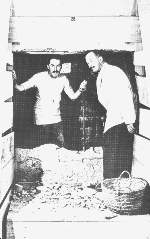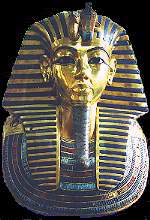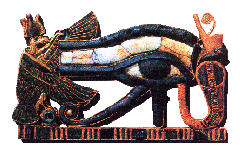King Tutankhamun
The Boy King
Ironically, our greatest royal treasure from ancient Egypt comes from a short lived boy king. King Tutankhamun was not even in the same category of achievement as the great Egyptian kings such as Khufu (builder of the Great Pyramid), Amenhotep III (prolific builder of temples and statuary throughout Egypt), or Ramesses II (prolific builder and usurper), in terms of the length of his reign or the depth of his accomplishments.
Howard Carter and his backer Lord Carnavon standing by the wall leading to the intact burial chamber of King Tut.
----------------------------------
 Indeed, it is his little known status that contributed to the successful hiding of his tomb, which was covered over by a later pharaoh who was clearing away an area in which to cut his own tomb.
Indeed, it is his little known status that contributed to the successful hiding of his tomb, which was covered over by a later pharaoh who was clearing away an area in which to cut his own tomb.On November 26, 1922, Howard Carter made archaeological history by unearthing the first Egyptian pharaonic tomb that still contained most of its treasures. Still, even this tomb had been robbed in antiquity, although the the robbery attempt was apparently thwarted before the thieves could make away with most of the treasure.
This tomb also yielded something else that had never been found in modern history - the pristine mummy of an Egyptian king, laying intact in his original burial furniture.
This tomb also yielded something else that had never been found in modern history - the pristine mummy of an Egyptian king, laying intact in his original burial furniture.
Tut's coffin before the initial unveiling of his mummy.
-----------------------------------------
Thus, Tut's tomb gives us a unique opportunity to explore the life of King Tut and allows us to learn more about this essential period in New Kingdom Egyptian history.
Tut's Death Mask
---------------------------------------
Eye of Horus
Made of gold and inlaid lapis, this piece was a pectoral amulet, worn around the neck.
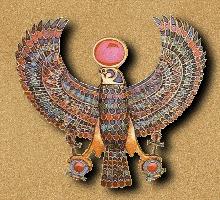
Horus
Here's one of the forms of horus as seen on another beautiful inlaid pectoral amulet.
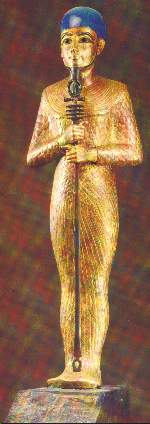
Ptah
This beautiful gold covered statue of the god Ptah has a blue faience cap and a gilded bronze scepter.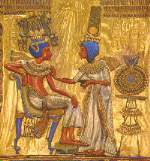
This is the scene on the throne of King Tut depicting King Tut with his queen Ankhesenamun.
Made of gold and inlaid lapis, this piece was a pectoral amulet, worn around the neck.

Horus
Here's one of the forms of horus as seen on another beautiful inlaid pectoral amulet.

Ptah
This beautiful gold covered statue of the god Ptah has a blue faience cap and a gilded bronze scepter.

This is the scene on the throne of King Tut depicting King Tut with his queen Ankhesenamun.
